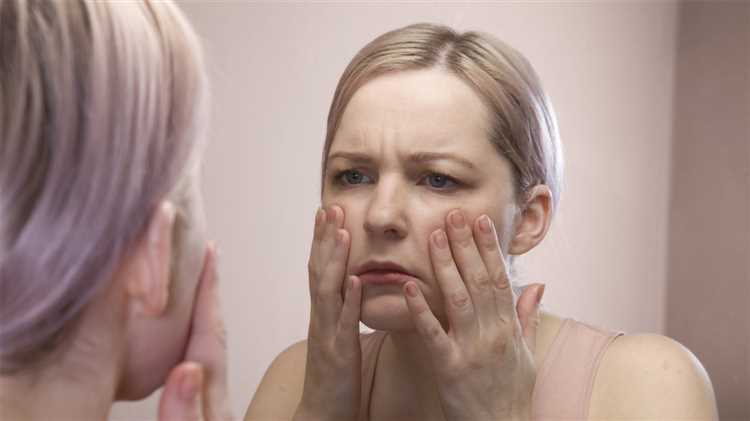Body dysmorphic disorder (BDD) is a mental health condition characterized by an overwhelming preoccupation with perceived flaws in one’s physical appearance. Individuals with BDD often experience intense distress and impairment in their daily functioning due to their obsessive thoughts and compulsive behaviors related to their appearance.
The exact causes of BDD are not yet fully understood, but research suggests that a combination of genetic, environmental, and psychological factors may contribute to its development. Some studies have found that individuals with BDD may have a higher risk of having a family member with the same or a similar condition, suggesting a possible genetic predisposition. Additionally, certain environmental factors, such as childhood trauma or societal pressure to conform to a certain beauty standard, may play a role in the onset of BDD.
Common symptoms of BDD include spending excessive amounts of time examining oneself in the mirror, frequent comparison of one’s appearance to others, and seeking reassurance from others about one’s physical attractiveness. Individuals with BDD may also engage in rituals or compulsive behaviors, such as excessive grooming or seeking cosmetic procedures, in an attempt to alleviate their distress. These symptoms can significantly impact an individual’s social and occupational functioning, often leading to feelings of isolation and low self-esteem.
Treatment for BDD typically involves a combination of therapy and medication. Cognitive-behavioral therapy (CBT) is often used to help individuals challenge and modify their negative thoughts and beliefs about their appearance. Additionally, selective serotonin reuptake inhibitors (SSRIs), a type of antidepressant medication, may be prescribed to help reduce the symptoms of anxiety and depression often associated with BDD.
In conclusion, body dysmorphic disorder is a complex mental health condition that can significantly impact an individual’s quality of life. Understanding the causes, symptoms, and treatment options for BDD is crucial in order to provide effective support and intervention for individuals struggling with this disorder.
Understanding Body Dysmorphic Disorder
Body Dysmorphic Disorder (BDD) is a relatively common psychological disorder that involves a distorted perception of one’s body image. People with BDD are preoccupied with perceived flaws or defects in their appearance, even when there is little or no evidence of them.
BDD can have a significant impact on a person’s daily life and overall well-being. It can cause severe distress, affect self-esteem and relationships, and may even lead to social withdrawal or suicidal thoughts. It is crucial to understand the causes, symptoms, and available treatment options for BDD.
Causes
The exact cause of BDD is not known. However, several factors are believed to contribute to the development of this disorder:
- Genetic predisposition: BDD tends to run in families, suggesting a genetic component.
- Environmental factors: Traumatic or negative experiences related to appearance can contribute to the development of BDD.
- Neurochemical abnormalities: Imbalances in certain neurotransmitters, such as serotonin, may play a role in BDD.
Symptoms
The primary symptom of BDD is an excessive preoccupation with perceived flaws in one’s appearance. Some common symptoms include:
- Obsessive thoughts about perceived flaws, spending hours each day thinking about them.
- Repeatedly checking one’s appearance in mirrors or other reflective surfaces.
- Engaging in excessive grooming or cosmetic procedures to try to fix perceived flaws.
- Avoiding social situations or activities due to self-consciousness about one’s appearance.
- Having significant distress or impairment in daily functioning due to these concerns.
Treatment
Treatment for BDD typically involves a combination of therapy and medication:
- Cognitive-behavioral therapy (CBT): CBT helps individuals challenge and change negative thoughts and behaviors related to their appearance.
- Medication: Selective serotonin reuptake inhibitors (SSRIs) can be prescribed to help reduce obsessive thoughts and compulsive behaviors.
- Support groups: Joining support groups or therapy groups with others who have BDD can provide understanding and validation.
- Self-help strategies: Engaging in activities that promote self-care, such as exercise, relaxation techniques, and practicing self-compassion.
Seeking professional help is essential for individuals suffering from BDD. With the right treatment and support, it is possible to manage the symptoms and improve the overall quality of life for individuals with BDD.
Causes of Body Dysmorphic Disorder
Body Dysmorphic Disorder (BDD) is a mental health condition that is characterized by obsessive and distressing thoughts about one’s own perceived flaws in appearance. While the exact cause of BDD is not fully understood, there are several factors that are believed to contribute to the development of this disorder.
- Genetics: There is evidence to suggest that genetic factors may play a role in the development of BDD. Studies have shown that individuals with a family history of BDD or other mental health conditions are more likely to develop the disorder themselves.
- Brain abnormalities: Some studies have found that individuals with BDD may have certain abnormalities in the brain, specifically in areas that are responsible for processing visual information. These abnormalities may contribute to the distorted perception of one’s own appearance.
- Environmental factors: Environmental factors such as societal pressure to conform to unrealistic beauty standards, bullying, or traumatic experiences related to appearance can also contribute to the development of BDD. These factors can lead to negative body image and a heightened focus on perceived flaws.
- Neurochemical imbalances: There is evidence to suggest that BDD may be associated with imbalances in certain neurotransmitters, such as serotonin, dopamine, and glutamate. These imbalances can affect mood, perception, and cognition, potentially contributing to the development of BDD.
It is important to note that these factors are not definitive causes of BDD, but rather potential contributors. Each individual’s experience with BDD may be unique, and a combination of these factors may be involved in the development of the disorder. Understanding the causes of BDD can help inform treatment approaches and interventions for individuals affected by this condition.
Signs and Symptoms of Body Dysmorphic Disorder
Body Dysmorphic Disorder (BDD) is a mental health condition characterized by an obsessive preoccupation with perceived flaws in one’s appearance. Individuals with BDD often spend excessive amounts of time and energy thinking about their appearance and engage in repetitive behaviors or mental acts in response to their concerns. Here are some signs and symptoms that may indicate the presence of BDD:
- Preoccupation with perceived defects: People with BDD intensely focus on one or more minor or imagined flaws in their appearance that others may not notice or find unimportant.
- Constant comparison: Individuals with BDD frequently compare their appearance to others and may perceive themselves as inferior or unattractive.
- Avoidance of social situations: Due to embarrassment or shame about their appearance, people with BDD may avoid social interactions or situations where they feel they will be scrutinized.
- Skin picking or hair pulling: BDD can be associated with repetitive behaviors such as skin picking, hair pulling, or excessive grooming in an attempt to fix perceived flaws.
- Excessive checking behaviors: Individuals with BDD may repeatedly check their appearance in mirrors, seek reassurance from others, or consult with medical professionals to alleviate their anxiety.
- Depression and anxiety: BDD often co-occurs with depression, anxiety, or other mental health conditions as individuals may experience significant distress and impairment in various areas of their life due to their concerns about their appearance.
It is important to note that while many individuals may experience dissatisfaction with their appearance, those with BDD have a distorted perception of their flaws, which significantly impacts their daily functioning and overall well-being.
If you or someone you know is showing signs of body dysmorphic disorder, it is important to seek professional help from a mental health provider experienced in treating this condition. Proper diagnosis and treatment can help individuals with BDD manage their symptoms and improve their quality of life.
Diagnosis of Body Dysmorphic Disorder
Diagnosing body dysmorphic disorder (BDD) involves a comprehensive evaluation of the individual’s symptoms, medical history, and psychological functioning. A proper diagnosis is crucial for effective treatment and support.
Here are the key steps and considerations in the diagnosis of BDD:
- Clinical interviews: Mental health professionals, such as psychologists or psychiatrists, conduct detailed interviews to assess the individual’s concerns, behaviors, and emotions related to their appearance. They may ask about specific body parts or features that the person perceives as flawed.
- Diagnostic criteria: The Diagnostic and Statistical Manual of Mental Disorders, Fifth Edition (DSM-5), provides specific criteria that must be met for a diagnosis of BDD. These criteria include excessive preoccupation with one or more perceived flaws, repetitive behaviors or mental acts related to appearance concerns, and significant distress or impairment in daily functioning.
- Symptom severity assessment: Clinicians may use rating scales or questionnaires to assess the severity of BDD symptoms and impairment. These tools help determine the extent of the individual’s distress and how it affects their quality of life.
- Collaboration with other professionals: In some cases, clinicians may collaborate with dermatologists or plastic surgeons to rule out or address any underlying medical conditions or physical abnormalities. This multidisciplinary approach ensures a comprehensive assessment and personalized treatment plan.
- Differential diagnosis: BDD shares some symptoms with other mental health conditions, such as obsessive-compulsive disorder (OCD) or social anxiety disorder. It is crucial for clinicians to differentiate BDD from these conditions through careful analysis of symptoms and their impact on the individual’s life.
Diagnosing body dysmorphic disorder requires careful consideration of the individual’s experiences, thoughts, and emotions related to their appearance. A thorough evaluation helps healthcare professionals provide an accurate diagnosis and develop an appropriate treatment plan tailored to the individual’s needs.
Treatment Options for Body Dysmorphic Disorder
Body dysmorphic disorder (BDD) is a mental health condition that requires treatment to help individuals manage and overcome their symptoms. Treatment for BDD typically involves a combination of therapy and medication.
Therapy:
- Cognitive-behavioral therapy (CBT): CBT is the most effective form of therapy for BDD. It helps individuals identify and challenge their negative thoughts and beliefs about their appearance. CBT also helps individuals develop healthier coping strategies and improve their self-esteem.
- Exposure and response prevention (ERP): ERP is a type of therapy that exposes individuals to situations that trigger their BDD symptoms. Through gradual exposure, individuals learn to resist the urge to engage in their typical behaviors or rituals, which helps reduce their anxiety and distress.
- Support groups: Participating in support groups can provide individuals with BDD a sense of community and understanding. Support groups allow individuals to share their experiences, gain support from others, and learn from each other’s coping strategies.
Medication:
- Selective serotonin reuptake inhibitors (SSRIs): SSRIs are a type of antidepressant that can help reduce the obsessive thoughts and compulsive behaviors associated with BDD. They work by increasing the levels of serotonin in the brain, which helps improve mood and reduce anxiety.
- Other medications: In some cases, other medications such as antipsychotics or anti-anxiety medications may be prescribed to help manage specific symptoms of BDD.
Complementary and alternative treatments:
- Mindfulness and meditation: Practices such as mindfulness and meditation can help individuals with BDD improve their self-awareness, manage stress, and develop a more positive mindset.
- Exercise and physical activity: Engaging in regular physical activity can help improve overall well-being and boost self-esteem. It can also serve as a healthy distraction from negative thoughts and behaviors associated with BDD.
- Self-help materials: Reading self-help books or participating in online programs specifically designed for individuals with BDD can provide additional support and guidance.
Collaborative approach:
A collaborative approach involving a team of mental health professionals, including therapists, psychiatrists, and primary care physicians, is often the most effective way to treat BDD. This approach ensures that an individual’s treatment plan is comprehensive and tailored to their specific needs.
It’s important to note that treatment for BDD may take time and patience. Finding the right combination of therapies and medications may involve trial and error. It’s essential for individuals with BDD to seek professional help and maintain a support system throughout their treatment journey.
Support for Individuals with Body Dysmorphic Disorder
Body Dysmorphic Disorder (BDD) can significantly impact an individual’s quality of life, causing distress and interfering with daily functioning. Fortunately, there are various forms of support available for individuals with BDD. The following are some options that can provide assistance and guidance:
1. Therapy
Cognitive-Behavioral Therapy (CBT) is the most effective form of therapy for BDD. CBT helps individuals challenge and change negative thought patterns and behaviors associated with their body image concerns. It focuses on reducing anxiety and improving self-esteem. CBT interventions such as exposure and response prevention can be particularly helpful in managing BDD symptoms.
2. Support Groups
Joining a BDD support group can be beneficial as it provides individuals with the opportunity to connect with others who have similar experiences. It can offer a safe space to share personal struggles and receive emotional support. Support groups can also provide valuable insights and coping strategies for managing BDD symptoms.
3. Medication
Antidepressant medications such as selective serotonin reuptake inhibitors (SSRIs) are commonly prescribed to alleviate the symptoms of BDD. These medications can help reduce obsessive thoughts and anxiety associated with body image concerns. However, medication should always be used in conjunction with therapy and under the guidance of a healthcare professional.
4. Self-help Resources
There are numerous self-help resources available for individuals with BDD. Books, online articles, and websites provide educational materials and practical strategies for managing BDD symptoms. These resources can offer valuable insights into understanding and coping with the disorder, providing individuals with a sense of empowerment and control.
5. Professional Support
Seeking help from a mental health professional who specializes in body image issues and BDD is crucial. They can provide a comprehensive assessment, diagnosis, and personalized treatment plan. Professionals such as psychologists, psychiatrists, and counselors can offer ongoing support and guidance throughout the recovery process.
6. Educational Programs
Educational programs focused on body image and BDD can provide individuals with a better understanding of the disorder and its impact. Workshops, seminars, and online courses can offer valuable information about body image, self-esteem, and building resilience. These programs can equip individuals with the necessary knowledge and skills to effectively manage BDD.
Remember, seeking support is a brave and important step towards managing and overcoming BDD. With the right help and resources, individuals with BDD can lead fulfilling lives and develop a healthier relationship with their body and self-image.
Prevention of Body Dysmorphic Disorder
Body Dysmorphic Disorder (BDD) is a complex mental health disorder characterized by an excessive preoccupation with perceived flaws in one’s appearance. While the exact cause of BDD is unknown, there are several strategies that can potentially help prevent its development:
- Education and Awareness: Promote awareness about body image issues and educate individuals about the unrealistic beauty standards perpetuated by society and the media. Encourage critical thinking and promote self-acceptance.
- Positive Body Image: Foster a positive body image by emphasizing the importance of self-acceptance and self-love. Encourage individuals to appreciate their unique qualities and attributes rather than focusing on external appearance.
- Healthy Coping Mechanisms: Teach individuals healthy ways to cope with stress, anxiety, and low self-esteem. Encourage activities such as exercise, mindfulness, and creative outlets as positive outlets for negative emotions.
- Early Intervention: Identify and address body image concerns and low self-esteem at an early stage. Provide support and resources to individuals who may be at risk for developing BDD.
- Supportive Environment: Foster an environment that promotes self-acceptance and positive body image. Encourage open conversations about body image and provide resources for individuals struggling with body image issues.
Treatment for Body Dysmorphic Disorder:
If someone is already experiencing symptoms of BDD, it is important to seek professional help. Treatment options for BDD may include:
- Therapy: Cognitive-behavioral therapy (CBT) has shown to be effective in helping individuals with BDD. CBT can help individuals challenge negative thoughts and develop healthier coping strategies.
- Medication: In some cases, medication may be prescribed to help manage symptoms of BDD. Antidepressants such as selective serotonin reuptake inhibitors (SSRIs) can be beneficial.
- Support Groups: Joining a support group can provide individuals with BDD a safe space to share experiences, gain support, and learn from others who face similar challenges.
- Self-Care: Practicing self-care is essential for individuals with BDD. Engaging in activities that promote self-acceptance, self-love, and self-confidence can help improve overall well-being.
It is important to remember that preventing body dysmorphic disorder requires a collective effort from society, including individuals, families, educators, and healthcare professionals. By promoting positive body image and providing support, we can help reduce the incidence and impact of BDD.
Questions and answers
What is body dysmorphic disorder?
Body dysmorphic disorder (BDD) is a mental health condition characterized by an obsessive preoccupation with perceived flaws or defects in one’s appearance, which are often not noticeable to others.
What are the causes of body dysmorphic disorder?
The exact causes of body dysmorphic disorder are unknown, but a combination of genetic, neurobiological, and environmental factors may contribute to the development of the disorder. Some people with BDD may have experienced traumatic events or have a history of childhood abuse.
What are the symptoms of body dysmorphic disorder?
Common symptoms of body dysmorphic disorder include excessive concern and preoccupation with one or more perceived flaws in appearance, frequent body checking behaviors, constantly seeking reassurance about one’s appearance, avoiding social situations due to self-consciousness, and difficulty focusing on tasks or activities due to preoccupation with appearance-related concerns.
Is body dysmorphic disorder treatable?
Yes, body dysmorphic disorder is treatable. The most common treatment approach involves a combination of psychotherapy, such as cognitive-behavioral therapy (CBT), and medication, such as selective serotonin reuptake inhibitors (SSRIs). Support groups and self-help strategies can also be beneficial in managing symptoms of BDD.
Can body dysmorphic disorder lead to other mental health problems?
Yes, body dysmorphic disorder can lead to other mental health problems. Many individuals with BDD experience anxiety, depression, and social isolation. They may also develop obsessive-compulsive disorder (OCD) or eating disorders as a result of their body image concerns.


